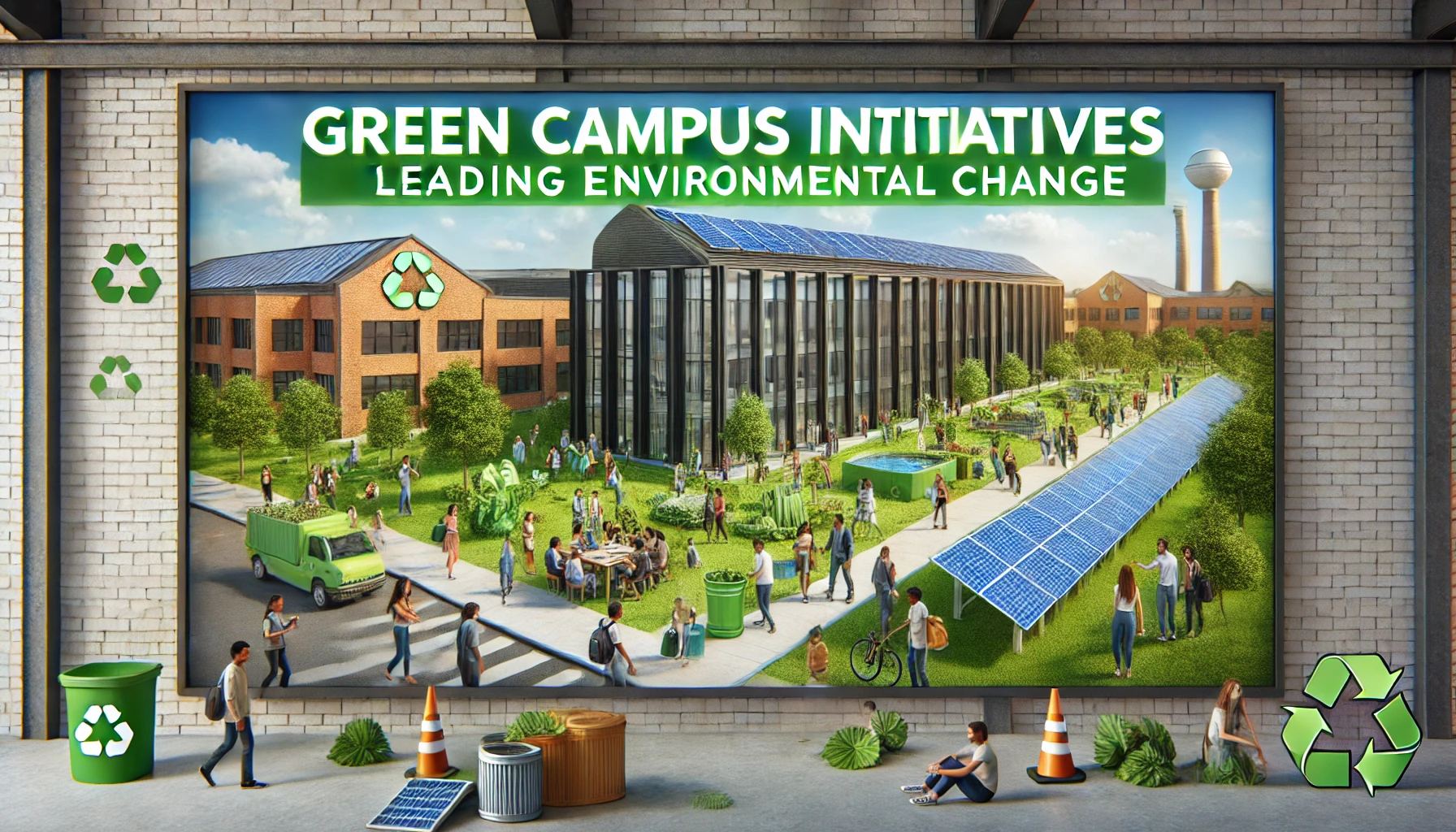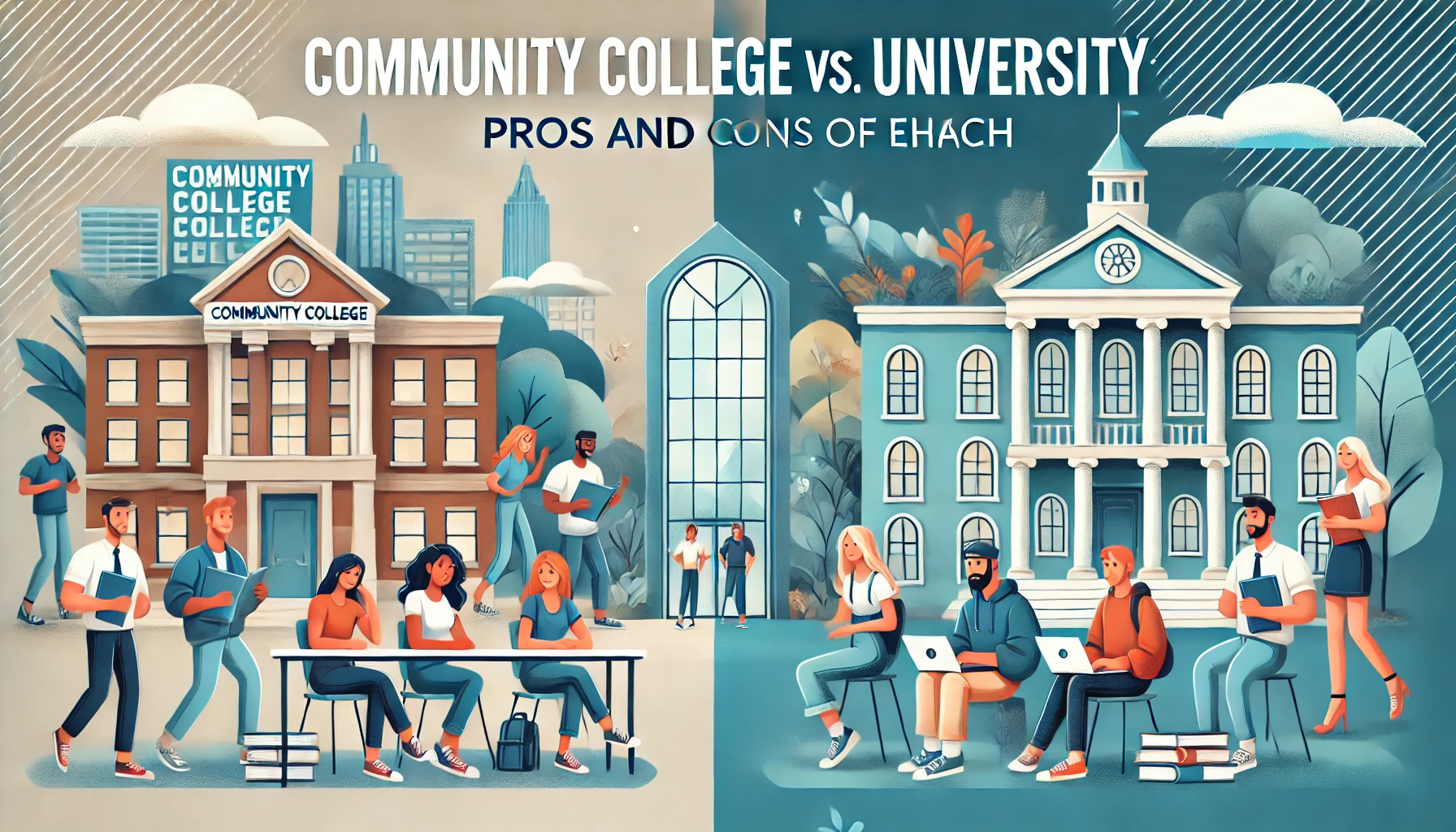Sustainable Campus Initiatives: How Universities Are Leading the Way in Environmental Responsibility

Universities around the world are increasingly becoming hubs of environmental innovation and leadership. As institutions dedicated to research, education, and community engagement, universities are uniquely positioned to address the pressing issue of climate change and environmental sustainability. Through sustainable campus initiatives, many universities are setting examples in environmental responsibility, demonstrating how large institutions can operate more sustainably and influence broader societal change. These initiatives range from reducing carbon footprints to promoting sustainable food practices, fostering a culture of environmental awareness, and driving policy changes that can have far-reaching impacts.
The Growing Importance of Sustainability in Higher Education
The importance of sustainability in higher education has grown significantly over the past few decades. With the rising awareness of climate change, pollution, and resource depletion, universities have recognized their responsibility to lead by example. As large consumers of resources and energy, campuses can have substantial environmental impacts. This awareness has led to the emergence of green campuses that aim to reduce waste, conserve energy, and promote sustainable living.
Students, faculty, and staff are demanding that their institutions take concrete steps toward sustainability. This growing pressure has prompted universities to rethink their operational strategies, curriculum, and community engagement efforts. As a result, many universities are adopting ambitious sustainability goals that align with global frameworks such as the United Nations’ Sustainable Development Goals (SDGs).
Key Sustainable Campus Initiatives
1. Energy Efficiency and Renewable Energy
One of the most impactful ways universities are addressing environmental responsibility is through energy efficiency and the adoption of renewable energy sources. Campuses consume vast amounts of electricity for lighting, heating, cooling, and powering research equipment. To mitigate this, many universities are investing in energy-efficient technologies such as LED lighting, smart thermostats, and energy management systems that monitor and reduce consumption.
Moreover, the installation of renewable energy sources like solar panels, wind turbines, and geothermal systems is becoming increasingly common. For example, Stanford University has transitioned to 100% renewable energy through solar power, significantly reducing its carbon footprint. These initiatives not only reduce greenhouse gas emissions but also lower operating costs in the long run, creating a win-win situation for both the environment and the institution’s finances.
2. Sustainable Transportation
Transportation is a significant contributor to a university’s overall carbon footprint, primarily through the daily commute of students, staff, and faculty. To address this, universities are promoting sustainable transportation options such as biking, walking, carpooling, and the use of electric vehicles (EVs). Many campuses have implemented bike-sharing programs, installed EV charging stations, and provided incentives for carpooling or using public transportation.
For instance, the University of British Columbia (UBC) in Canada has a comprehensive sustainable transportation plan that includes an extensive network of bike lanes, carpool programs, and partnerships with public transit providers. These efforts not only reduce emissions but also promote healthier lifestyles and reduce traffic congestion on and around campuses.
3. Waste Reduction and Recycling
Universities are also tackling waste management through comprehensive recycling programs, composting, and initiatives to reduce single-use plastics. Waste reduction strategies include installing water refill stations to discourage the use of bottled water, conducting waste audits to identify and address waste sources, and implementing composting programs for organic waste.
Many universities have also adopted zero-waste goals, aiming to divert 90% or more of their waste from landfills. The University of California system, for example, has set a goal of zero waste by 2025, which includes reducing waste generation, increasing recycling and composting, and promoting sustainable procurement practices. These efforts help to conserve resources, reduce pollution, and foster a culture of sustainability on campus.
4. Sustainable Food Systems
The impact of food systems on the environment is a growing concern, and universities are taking steps to promote sustainable dining options. Initiatives include sourcing locally grown, organic, and plant-based foods, reducing food waste, and promoting sustainable packaging. Some universities have even established on-campus farms or gardens that provide fresh produce for dining halls and serve as living laboratories for students.
For example, the University of Massachusetts Amherst runs one of the most sustainable dining programs in the United States, featuring local, organic, and fair-trade food options. The campus also engages in food recovery programs, where surplus food is donated to local food banks, addressing food insecurity while reducing waste.
5. Green Buildings and Sustainable Architecture
Green buildings are a cornerstone of sustainable campus initiatives. Universities are increasingly constructing or retrofitting buildings to meet green standards such as LEED (Leadership in Energy and Environmental Design) certification. These buildings are designed to use less water, reduce energy consumption, and minimize waste, while providing healthier environments for occupants.
Harvard University, for instance, has committed to making all new construction and major renovations meet LEED standards. These green buildings incorporate sustainable materials, energy-efficient systems, and designs that maximize natural light and reduce the need for artificial heating and cooling.
Challenges in Implementing Sustainable Campus Initiatives
1. Financial Constraints
One of the primary challenges universities face in implementing sustainable initiatives is financial. While many sustainable practices can lead to long-term cost savings, the initial investment can be substantial. Retrofitting buildings, installing renewable energy systems, and upgrading transportation infrastructure require significant upfront costs that not all institutions can afford.
However, universities are finding creative ways to overcome these challenges, such as applying for grants, forming partnerships with private companies, and engaging in green bonds to finance their sustainability projects. The long-term benefits, including reduced energy costs and enhanced reputation, often outweigh the initial expenditures.
2. Behavioral Change and Engagement
Achieving sustainability goals requires the active participation of students, faculty, and staff. Changing behaviors around waste management, energy use, and transportation can be challenging, especially in large institutions with diverse populations. Universities must invest in educational campaigns, workshops, and incentives to foster a culture of sustainability on campus.
Engagement programs, such as sustainability pledges, green certifications for offices, and student-led initiatives, play a crucial role in promoting sustainable practices. By involving the entire campus community, universities can create a sense of shared responsibility and commitment to environmental stewardship.
3. Balancing Tradition with Innovation
Universities are steeped in tradition, and introducing new sustainable practices can sometimes clash with long-standing institutional norms and practices. Balancing the preservation of historical buildings and landscapes with the need for modern, sustainable infrastructure is an ongoing challenge. Universities must navigate these complexities while striving to maintain their commitment to sustainability.
The Broader Impact of Sustainable Campus Initiatives
The influence of sustainable campus initiatives extends far beyond the boundaries of the university. As microcosms of society, universities can test and model sustainable practices that can be scaled up to cities, businesses, and other institutions. The research conducted on campuses often drives innovation in sustainability, from developing new renewable energy technologies to advancing sustainable agriculture practices.
Moreover, by educating the next generation of leaders, universities play a pivotal role in shaping a more sustainable future. Graduates who have been exposed to sustainable practices during their education are more likely to carry these values into their personal and professional lives, driving change in their communities and industries.
The Future of Sustainable Campuses
The future of sustainable campuses is bright, with universities continuing to push the boundaries of what is possible in environmental responsibility. The integration of technology, such as smart grids, AI-driven energy management, and sustainable data centers, will further enhance the efficiency and impact of campus sustainability efforts.
As universities continue to prioritize sustainability, they will not only reduce their environmental footprint but also inspire broader societal change. By leading the way in environmental responsibility, universities are proving that it is possible to balance the demands of a growing population with the need to protect our planet for future generations.
Ultimately, the success of sustainable campus initiatives lies in the commitment of the entire university community—students, faculty, staff, and administrators—to work together toward a common goal. Through collaboration, innovation, and a shared sense of purpose, universities can set the standard for environmental responsibility and drive the changes needed to create a more sustainable world.




